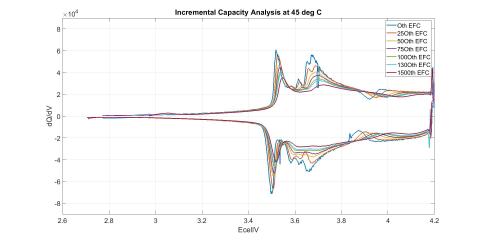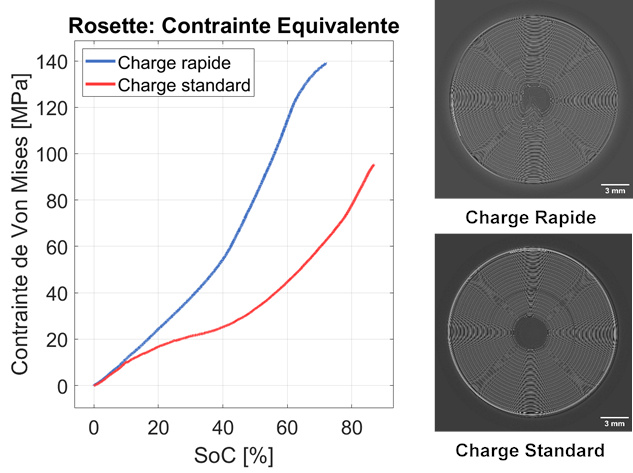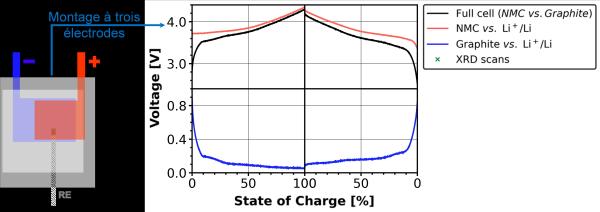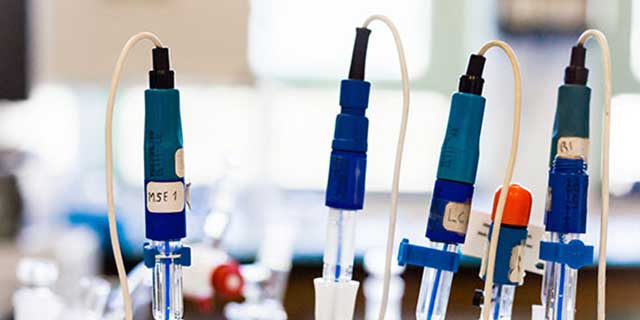Second Life of Batteries
Given the high demand for lithium-ion batteries for stationary and mobility applications, we are contributing to the development of diagnostic and prognostic tools to assess their condition in order to optimise their second life and limit their ageing. The capacity delivered by a battery decreases during use. There comes a point when the capacity is considered too low to satisfy the user (e.g. loss of EV range). However, the remaining capacity may be sufficient for less demanding applications (e.g. stationary storage). We have studied the impact of ageing during the first life on the feasibility of a second life, its duration, and the evolution of ageing mechanisms. The estimation of the state of health (SOH) of batteries uses various techniques, including electrochemical impedance spectroscopy and incremental capacity analysis.We are developing studies on the electrothermal modelling of Li-ion batteries to simulate their behaviour in second life. This approach, which is based on a physical model, takes into account the internal geometry of an ‘industrial’ cell measured by tomography as well as entropy. The simulation results show anisotropic heat transport and endothermic phenomena associated with lithium intercalation mechanisms. The results validated at the cell level have been extrapolated to a module (combination of cells in series or parallel).
 |
 |
- William Wheeler, Yann Bultel, Pascal Venet, Elie Riviere, Ali Sari. On the impact of the negative electrode in Graphite/LFP cells during first and second life aging experiments. Journal of Energy Storage 129 (2025) 117288. ⟨10.1016/j.est.2025.117288⟩.
- E. Coron, S. Geniès, M. Cugnet, P. X. Thivel. High-Energy Li-Ion Cells: Impact of Electrode Ageing on Second Life Viability, Journal of The Electrochemical Society, (2021), DOI: 10.1149/1945-7111/ac3112
Fast charging studies
With regard to the development of batteries for electric mobility, battery charging remains a significant obstacle today. In order to satisfy users, rapid charging is necessary. However, this type of charging generally causes damage due to the high currents and temperatures generated. Research into charging protocols that limit ageing while meeting specific specifications is therefore a topical issue. We have therefore focused our attention on rapid battery charging and battery ageing (mechanical deformation, electrolyte degradation, lithium plating, etc.).With regard to the detection of lithium plating, particularly during rapid charging, the use of a reference electrode makes it possible to monitor changes in the potential of the negative electrode. The aim is to gain a better understanding of where areas conducive to lithium plating occur.
 |
 |
- Erwan Tardy, Pierre–Xavier Thivel, Florence Druart, Pierre Kuntz, Didier Devaux, Yann Bultel. Internal temperature distribution in lithium–ion battery cell and module based on a 3D electrothermal model: An investigation of real geometry, entropy change and thermal process. Journal of Energy Storage, 2023, 64, pp.107090. ⟨10.1016/j.est.2023.107090⟩. ⟨hal–04911786⟩
- Pedro V.H. Seger, Pierre-Xavier Thivel, Delphine Riu, A second life Li-ion battery ageing model with uncertainties: From cell to pack analysis, Journal of Power Sources 541 (2022) 231663 (doi : 10.1016/j.jpowsour.2022.231663)



